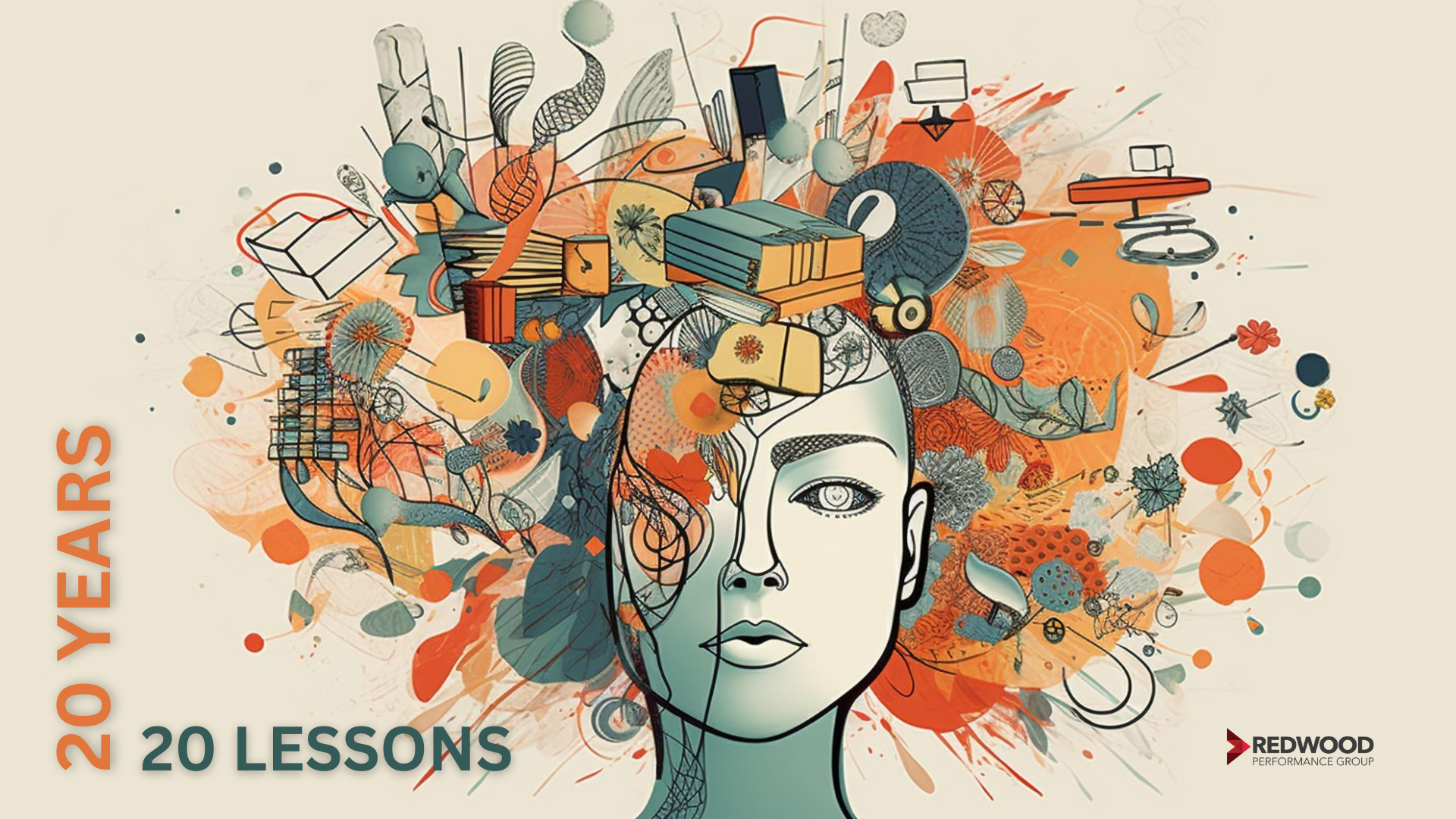
Twenty Lessons Learned Over Twenty Years of L&D Production (Part Two)
In my last blog, I shared the first of 20 eLearning lessons learned over twenty years of L&D production for various clients, from large government departments to industry giants, healthcare organizations and charities, and just about everything in between.
In this blog, I’ll reveal the final ten lessons that I believe are must-haves for any learning professional producing courses that resonate with and are relevant to today’s demanding learners.
Blend It – With a Double Topping of Engagement
We all know the advantages of blended learning. But blended learning without engagement is, more likely than not, a recipe for learner boredom. Instead, focus on integrating interactive and diverse learning activities catering to different learning styles. Try incorporating a mix of synchronous and asynchronous elements, such as live virtual classes for real-time interaction, and pre-recorded lectures for self-paced learning. Group projects or peer-to-peer learning activities that promote teamwork and communication are also great for driving engagement.
Focus on the Foundation
Invest the time it takes to build a strong foundation in structure and design. A well-structured course delivers learning content that flows logically, making it easier for learners to understand and retain the material. A well-designed course should cater to different learning styles and incorporate multimedia elements like videos, quizzes, and interactive activities. A further benefit is scalability and flexibility. Great design allows for easy updates and adaptations to the course content as an organization’s needs change over time.
Provide Frequent Feedback
Feedback and assessments help learners gauge their understanding and learning progress. But we all know that. What is more subtle and arguably more powerful is the role of feedback in correcting misconceptions, sparking motivation, and setting the stage for future learning directions. In an eLearning environment, with limited face-to-face interaction, astute feedback and assessment create a constant loop of learning, motivation, and reward.
Design for Continuous Improvement
A well-designed learning course should provide a trajectory for continuous learner improvement. Start at a level that helps learners develop a deep understanding of the subject matter. Gradually incorporate more complex concepts, enabling learners to test their knowledge in increasingly challenging scenarios. Complex interactions, simulations, discussions, and problem-solving with peers help develop the critical thinking and analytical skills essential for continuous improvement. Ideally, you want to foster a culture of constant learning, where team members help one another keep pace with the rapid changes impacting every sector.
Emphasize Emotional Intelligence
What makes a learning project a success? After 20 years and hundreds of projects, I’d have to point to emotional intelligence (EI) as one of the leading factors. EI encompasses qualities essential to understanding complex issues. We design content that builds self-awareness, empathy, soft skills, and the ability to appreciate other points of view. The benefits of EI work both ways: Learning managers must understand the diverse needs of learners and be responsive to their needs. Learners benefit from building game-changing skills like enhanced stress management, motivation, and peer-to-peer communication. We believe in EI development so much that we recently produced GradForce Skills, a multi-module course designed to build soft skills for recent post-secondary graduates.
Social is the Secret Sauce
Social learning has always been important. Given the pandemic and ensuing remote work trend, it’s only become more so. At Redwood, we encourage the design of social features like forums, chat rooms, social media groups, leaderboards, peer-to-peer communication, and collaborative learning spaces. Group learning projects foster teamwork and a sense of community. Live webinars, discussions, and workshops provide real-time interaction and a more dynamic learning experience. Peer review and feedback engage learners in the evaluation process and help them learn from one another.
Learn to Love Data Analytics
The beauty of data? It isn’t subjective, and it doesn’t candy coat. It provides deep insights into learner engagement, baseline knowledge, and performance. Tracking and analyzing course completion rates, time spent on each module, quiz scores, and scenario decision points gives you invaluable insight. Analytics enable you to tailor your course to each learner’s areas of difficulty. In an era of continuous learning, they provide a road map for designing the all-important next steps in a continuous learning environment.
Make it Mobile
Today’s employees want opportunities to upskill. The main obstacle is time. According to a Deloitte study, the average employee can dedicate just 24 minutes a week to learning. Mobile provides an ideal solution: It enables access to course materials and learning activities anytime and anywhere. This flexibility is especially beneficial to those balancing work, family, or other commitments. Additional mobile advantages include just-in-time learning, interactivity, user-friendly interfaces, and push notifications.
Get Learners in the Game
Gamification is a powerful tool that significantly enhances the learning experience by incorporating game-like elements such as points, badges, leaderboards, and challenges into the learning content. Game-based learning frequently involves applying practical skills in typical workplace scenarios, making the learning more memorable. Instant feedback helps learners understand what they’ve gotten right and opportunities for improvement. Lee Downs, Redwood’s lead ID, and I recently presented a highly gamified course at the SeriousPlay conference in Toronto. We were amazed at the rapid evolution and synergy of game technology and learning.
Clients Depend on Your Expertise
Occasionally, you will encounter clients who are new to learning and development or those who are under performance pressure to quickly deliver results. Expectations can be unrealistic, or budget constraints are in place that limit a producer’s delivery options. Some clients may not fully understand workplace learning strategies or the technological tools used to create today’s interactive courses. At Redwood, we go to extraordinary lengths to keep everyone on the same page and aligned to the same objectives. In all cases, we work with clients to ensure they are up-to-speed on both the production process and key touchpoints along the way.
If you’ve made it this far, thanks for allowing me to share 20 eLearning lessons I’ve learned over twenty years of L&D production. To play a part in helping individuals and organizations enhance their value and career performance potential has been an amazing opportunity for the entire Redwood team. And if the next twenty years are as exciting as the first, all I can say is buckle up—we are in for one hell of a ride!

